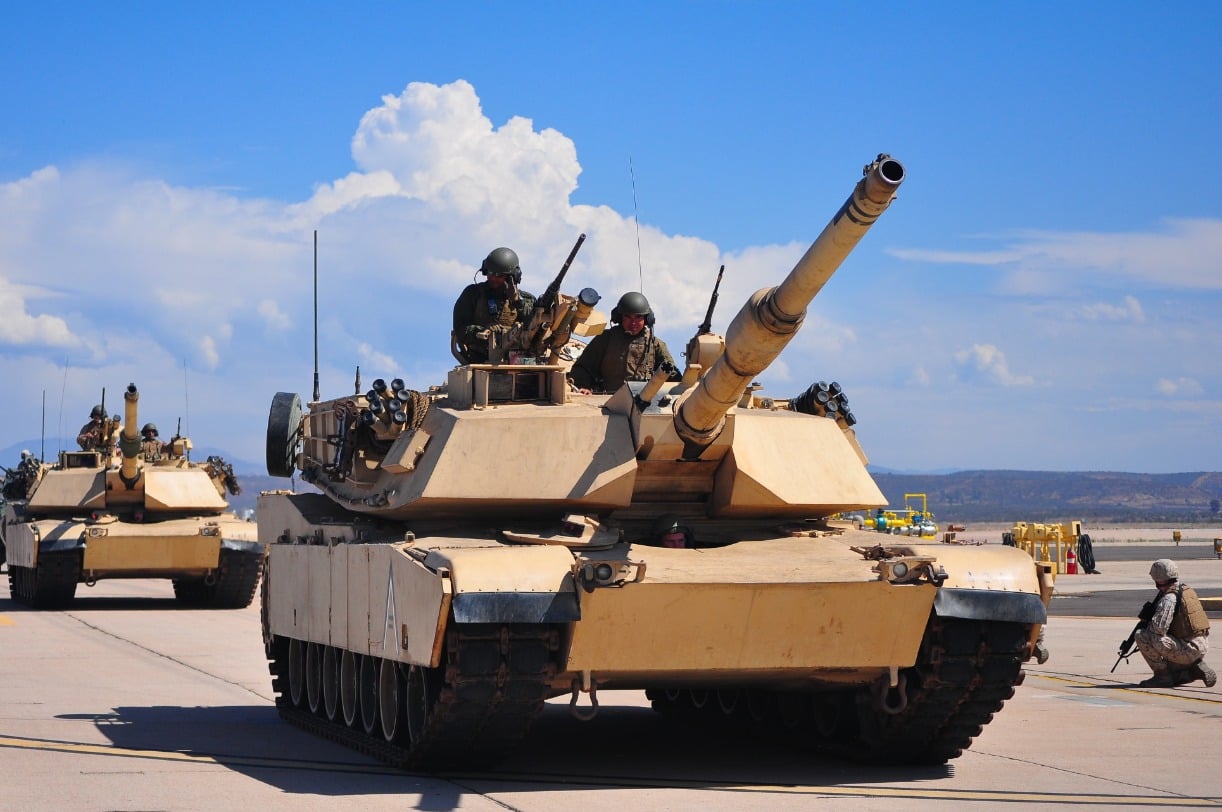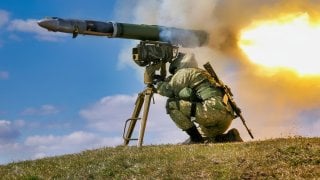Ukraine Has A Problem: 20 out of 31 M1 Abrams Tanks Have Been Destroyed
Since February 2022, Ukraine has relied heavily on Western aid to resist the Russian invasion, including the use of U.S.-supplied M1 Abrams tanks. Despite its reputation as a reliable main battle tank, the Abrams has suffered heavy losses on Ukrainian soil, with up to 20 out of 31 tanks reportedly destroyed due to advanced Russian weaponry like the Kornet anti-tank missile.
Summary and Key Points You Need to Know: Since February 2022, Ukraine has relied heavily on Western aid to resist the Russian invasion, including the use of U.S.-supplied M1 Abrams tanks. Despite its reputation as a reliable main battle tank, the Abrams has suffered heavy losses on Ukrainian soil, with up to 20 out of 31 tanks reportedly destroyed due to advanced Russian weaponry like the Kornet anti-tank missile.
-In response, Ukrainians have adopted a low-tech fix: steel cages wrapped around the tanks to enhance their survivability.
Although not ideal, this retrofit has shown effectiveness by offering a 35% increase in crew protection, helping keep the Abrams in action.
How Ukraine's M1 Abrams Tanks are Adapting to Russian Warfare
Since February 2022, the Ukrainians have been resisting the Russian invasion; the conflict has long since descended into a war of attrition, with the Ukrainians defying expectations against their more powerful neighbors.
Ukrainian resistance relies on Western aid: cash, training, and especially, military equipment. The United States in particular has been generous, offering the Ukrainians F-16 multirole fighters, Javelin anti-tank missiles, and the venerable M1 Abrams tank.
The Abrams, despite enjoying a positive reputation as a reliable main battle tank, has not fared all that well on Ukrainian soil. Of the 31 Abrams gifted to the Ukrainians, as many as 20 may have been destroyed already.
This makes sense; the war has descended into a grinding, heavy-casualty conflict, featuring what has been described as the most vicious fighting on the European continent since the end of World War II.
Keeping the Abrams alive
Ukraine’s 47th Brigade “lost its first M-1 on or before Feb. 26 when a Russian first-person-view drone struck the tank’s ammunition compartment and sparked a fire that ultimately destroyed it,” Forbes reported in March. “The second Abrams got knocked out on or before March 3 – this time reportedly by a Kornet laser-guided anti-tank missile that hit the relatively thinly-protected side of the tank’s hull and passed right through the attached M-19 explosive reactive armor.”

The Kornet missile is well designed, with two warheads. The first warhead destroys the tank’s armor, while the second explodes inside the tank itself.
The Abrams losses kept coming, eventually forcing the Ukrainians to sideline the tank, “in part because Russian drone warfare has made it too difficult for [the Abrams] to operate without detection or coming under attack,” NPR reported.
But keeping the Abrams sidelined long term wasn’t an option for the resource-poor Ukrainians. Instead, they improvised a low-tech enhancement that promises to improve the high-tech Abrams’ survivability. The fix: steel cages wrapped around the tank frame.
According to The Hill, “the retrofit has worked extraordinarily well at protecting not just the Abrams but also other U.S. armored fighting vehicles like the Bradleys…For the $10 million apiece Abrams, the relatively crude fix has helped keep the tanks on the battlefield.”
The screens are laid across the top of the Abrams, where the armor is the weakest. Each screen can take one hit before needing to be replaced. Miraculously, it can offer a 35% increase in crew survivability.
Of course, the steel screens are hardly an ideal solution. They will delay the destruction of the Ukrainian tank fleet, but Ukraine’s resources are dwindling, and each tank lost will be extremely difficult to replace.
About the Author: Harrison Kass
Harrison Kass is a defense and national security writer with over 1,000 total pieces on issues involving global affairs. An attorney, pilot, guitarist, and minor pro hockey player, Harrison joined the US Air Force as a Pilot Trainee but was medically discharged. Harrison holds a BA from Lake Forest College, a JD from the University of Oregon, and an MA from New York University. Harrison listens to Dokken.
Image Credit: Creative Commons.


